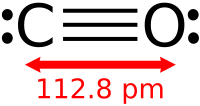
Photo from wikipedia
Pteropods are abundant zooplankton in the Western Antarctic Peninsula (WAP) and important grazers of phytoplankton and prey for higher trophic levels. We analyzed long-term (1993–2017) trends in summer (January–February) abundance… Click to show full abstract
Pteropods are abundant zooplankton in the Western Antarctic Peninsula (WAP) and important grazers of phytoplankton and prey for higher trophic levels. We analyzed long-term (1993–2017) trends in summer (January–February) abundance of WAP pteropods in relation to environmental controls (sea ice, sea surface temperature, climate indices, phytoplankton biomass and productivity, and carbonate chemistry) and interspecies dynamics using general linear models. There was no overall directional trend in abundance of thecosomes, Limacina helicina antarctica and Clio pyramidata, throughout the entire WAP, although L. antarctica abundance increased in the slope region and C. pyramidata abundance increased in the South. High L. antarctica abundance was strongly tied to a negative Multivariate El Niño Southern Oscillation Index the previous year. C. pyramidata abundance was best explained by early sea ice retreat 1-yr prior. Abundance of the gymnosome species, Clione antarctica and Spongiobranchaea australis, increased over the time series, particularly in the slope region. Gymnosome abundance was positively influenced by abundance of their prey, L. antarctica, during the same season, and late sea ice advance 2-yr prior. These trends indicate a shorter ice season promotes longer periods of open water in spring/summer favoring all pteropod species. Weak relationships were found between pteropod abundance and carbonate chemistry, and no long-term trend in carbonate parameters was detected. These factors indicate ocean acidification is not presently influencing WAP pteropod abundance. Pteropods are responsive to the considerable environmental variability on both temporal and spatial scales—key for predicting future effects of climate change on regional carbon cycling and plankton trophic interactions. Pteropods (pelagic snails) are ubiquitous holoplanktonic zooplankton that are an important link between primary producers and higher trophic organisms, major contributors to organic and inorganic carbon flux, and key indicators of ecosystem health (Foster et al. 1987; Pakhomov et al. 1996; Giraldo et al. 2011; Manno et al. 2017). Both thecosome and gymnosome pteropods (shelled and nonshelled, respectively) are common components in the diets of carnivorous zooplankton, fish (such as cod, salmon, and herring), and sea birds in many regions including the Antarctic and Pacific Northwest (Hopkins 1987; Pakhomov et al. 1996; Hunt et al. 2008; Giraldo et al. 2011; Sturdevant et al. 2012). All types of pteropods influence carbon cycling via their grazing and predation and subsequent fecal pellet production (Lalli and Gilmer 1989; Bernard and Froneman 2003; Hunt et al. 2008; Bernard et al. 2012). Additionally, thecosomes produce mucous feeding webs which aggregate and export particulate organic matter (Gilmer and Harbison 1986; Manno et al. 2017). Thecosome pteropods, and larval gymnosomes–which shed their shells during metamorphosis into adults, also contribute to carbon cycling through the sinking and dissolution of their aragonitic shells, which results in the release of carbonate ions thus influencing the inorganic carbon pump (Lalli and Gilmer 1989; Howard et al. 2011; Manno et al. 2017). It is estimated that global pteropod biomass is approximately 500 Tg C and that thecosomes contribute between 20% and 40% of the global carbonate production and at least 12% of the total carbonate flux (Berner and Honjo 1981; Bednaršek et al. 2012a). The carbonate balance may be disrupted or shifted by ocean acidification (OA), the anthropogenic addition of carbon dioxide to seawater (Doney et al. 2009; Le Quéré et al. 2015). Thecosome pteropods are considered sentinel indicators of OA due to the vulnerability of their aragonitic shells dissolving under increasingly acidic conditions from a changing climate (Orr et al. 2005; Bednaršek et al. 2014; Manno et al. 2017). Other *Correspondence: [email protected] Additional Supporting Information may be found in the online version of this article. Special Issue: Long-erm Perspectives in Aquatic Research Edited by: Stephanie Hampton, Matthew Church, John Melack and Mark Scheuerell
Journal Title: Limnology and Oceanography
Year Published: 2018
Link to full text (if available)
Share on Social Media: Sign Up to like & get
recommendations!